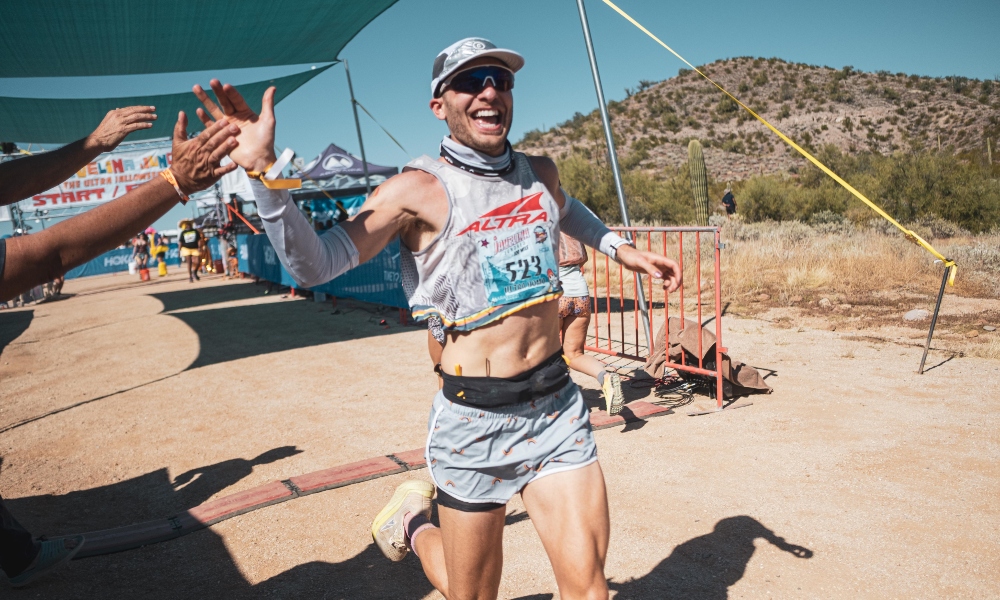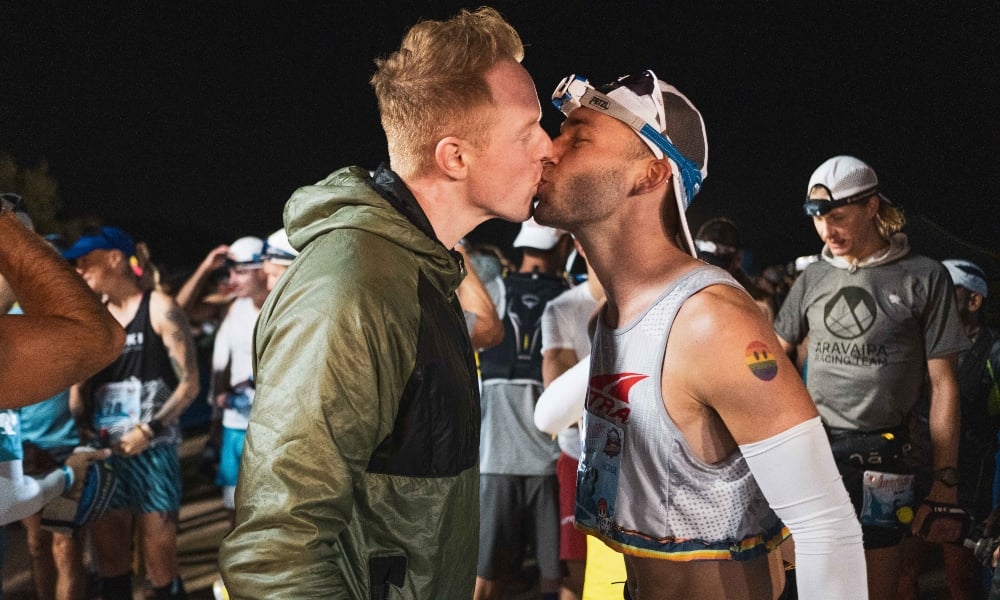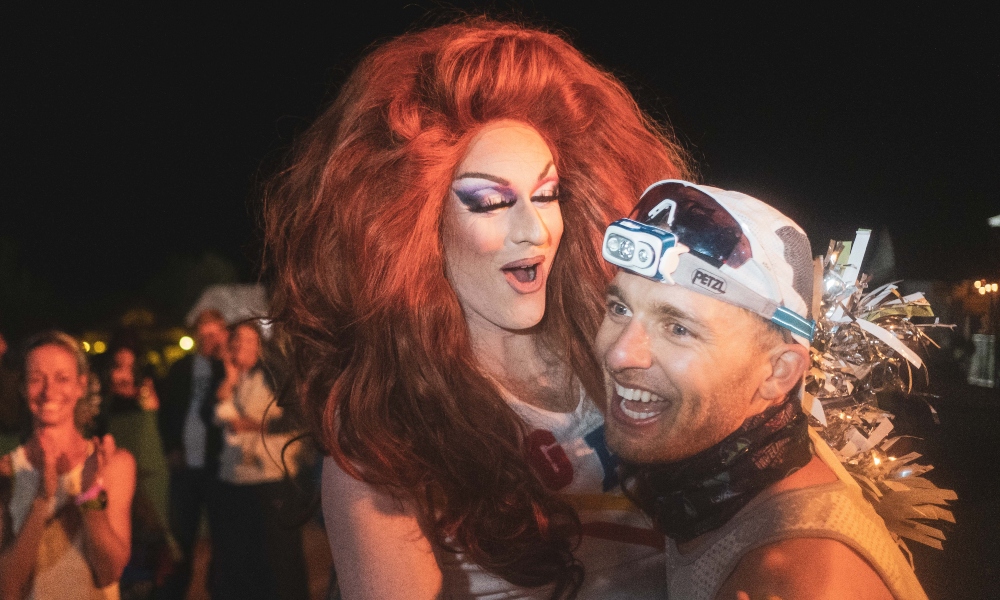Suunto athlete, ultra-runner and diversity champion Ryan Montgomery is set on waking up the outdoor scene to its ongoing failure to be an accessible and welcoming place to people from all walks of life and ethnic backgrounds. It’s not going to change by itself; only with awareness, validation and deliberate action can it be reversed. Read on for Ryan’s sage advice on diversity and how we can all contribute to a more open minded, welcoming outdoors.

Ryan having a blast at the Javelina-Jundred 100-miler in Arizona.
We all love being in the outdoors—with its multi-colored trees and endless plant and animal species—all thriving in uniquely different yet interconnected ecosystems. The existence of these different species and ecosystems tells us that the outdoors is inherently diverse—essentially diverse. I believe we can all agree that nature’s ecosystems thrive because of its inter-dependences across diverse plants, animals, and climates.
The outdoors teaches us that diversity is necessary for survival—to thrive. However, when I look at the people who are most often outdoors and adventuring in nature, they seem to be the least diverse and more binary compared to nature’s diversity standards, as mentioned above.
The outdoor diversity problem
For outdoor enthusiasts and adventurers, the outdoors provides a sense of belonging. We feel connected to the tree, the mountains. Nature is an integral part of all human experience, but a major gap today is that diverse communities across the world do not feel included in the outdoor spaces, let alone having access to these spaces.
In the United Kingdom, for example, racial minorities represent only about 1 % of visitors to national parks. In the United States, while people of color make up 40 % of the nation’s population, 70 % of visitors of National Parks and Forests are white, according to the National Health Foundation. Based on the past treatment and lack of inclusion of people of color (i.e. slavery), it is no wonder why people of color perhaps do not feel safe to travel outdoors, let alone be by themselves outdoors. LGBTQ communities have gathered in cities, farther away from the outdoors, to escape prejudices and to find community. Also, for women, the outdoors is often perceived (and unfortunately is) as a place where men can take advantage of them.
It makes sense why our outdoor spaces have become increasingly homogenous given our history and systemic problems in the past and present.

Ryan and his partner connect before the race kicks off.
Focusing on diversity - what can we do about it?
When I spoke to environmental US-based LGBTQ advocate Pattie Gonia about the importance of diversity, they say that “humanity is an ecosystem, and we need to support each other if we want it to survive.” And that’s all people—people of color, women, people with disabilities, and more. Until we can help marginalized communities realize that the outdoors is for them—and that it’s accessible too—all of humanity’s ecosystem cannot truly embrace what the outdoors has to offer.
Reframing what it means to be in the outdoors
One key to inclusive in the outdoors is to reframe what it means to be in outdoors and what it means to experience it. Oftentimes, the ‘outdoors’ is a man climbing a mountain, but that is a very narrow perspective. Pattie said that we can help others “redefine what outdoor experiences are, because we know we can’t get away all the time to be surrounded by a mountainous landscape. We can see so much beauty simply from the birds outside the window,” for example, or even in the small grass park within a city. Outdoors experiences can be had everywhere—not only in national parks, which are often 2- to 5-hour car or train rides from metropolitan areas where diverse communities typically reside.

Pattie Gonia and Ryan celebrate at the Javelina-Jundred 100-miler.
Show me the money
Money is a major concern for diverse communities to get in the outdoors, too.
Having the proper attire for snow or mountain climate, to simply having a vehicle that can get you into the forest or mountains, are barriers for many people of color (and others) to getting into mountain sports. We can support diverse communities by contributing to non-profit and programs that explicitly help diverse communities get outdoors. Some of my favorite organizations doing this work are Brave Trails, Harlem Run, and the following organizations on this website.
Celebrating diversity on the trail
As a queer, gay trail runner and outdoor lover, I have gained many micro experiences overtime that have helped me realized that the outdoors are for me and that there are other people like me out on the trails. That realization was a really empowering, life-changing moment. These experiences can easily be seen in my recent race, the Javelina Jundred 100-miler in Arizona, USA. The race is all about celebrating diversity and dressing up in costumes to express yourself however you want. I ran the race in a female-presenting crop top with rainbow tattoos on my arm. I felt fun, free, and excited. This type of expression at a race helped me, most likely mentally, in my performance because I was able to cross the finish line in 2nd place with a leg-crushing time of 13 hours 33 minutes. I held a rainbow Pride flag at the finish line next to my boyfriend. My performance earned a Golden Ticket to compete in the elite field at the US-based Western States Endurance Run in June 2022.
It’s clear: Inclusive outdoors experiences help diverse people show up as their best authentic selves in outdoor places and in sport.
It is my hope that we can provide that same inclusive, safe experiences to our diverse communities outside so that they too can experience the same love and belonging that you and I feel in the outdoors.
All images: Nick Danielson